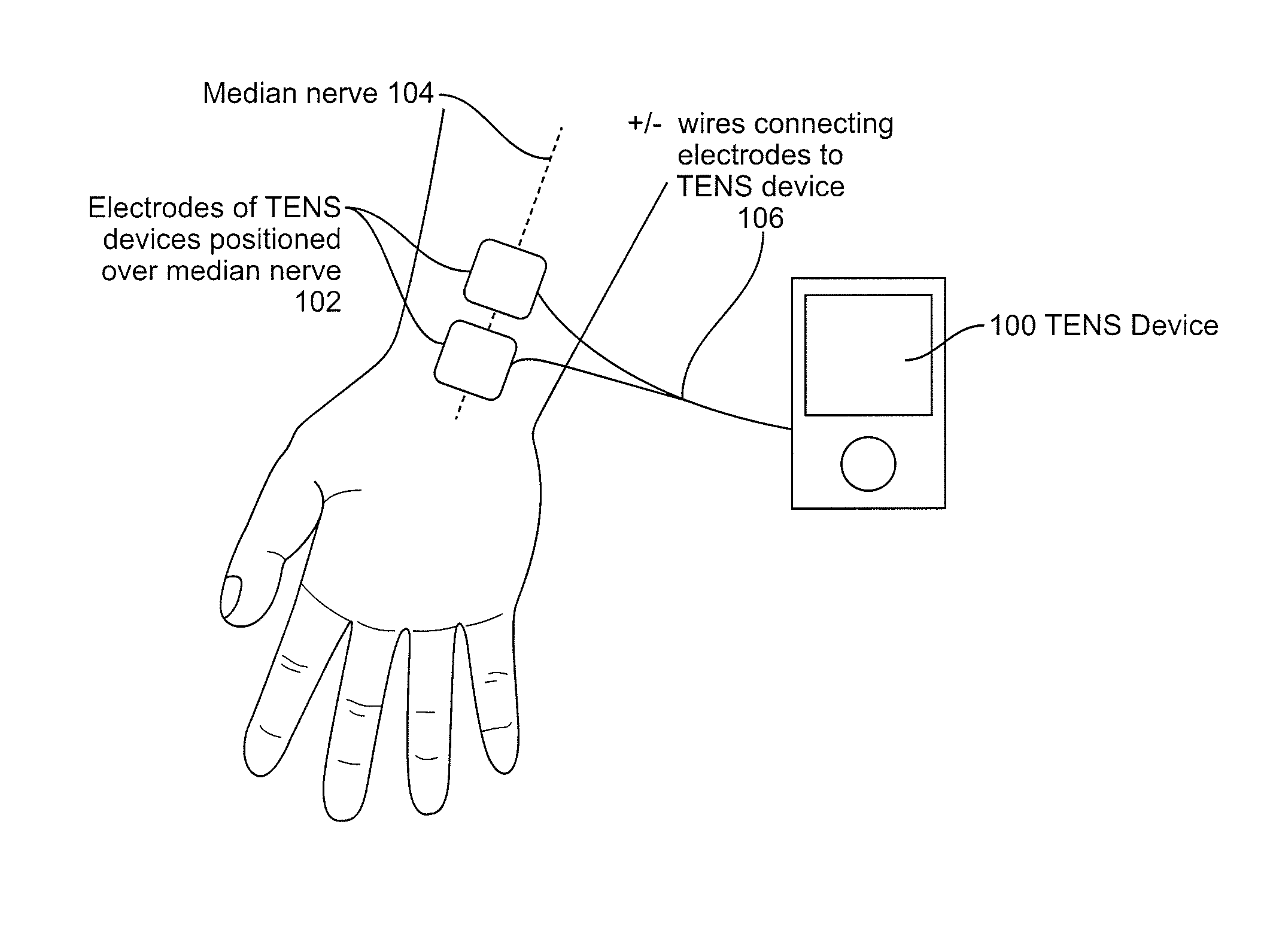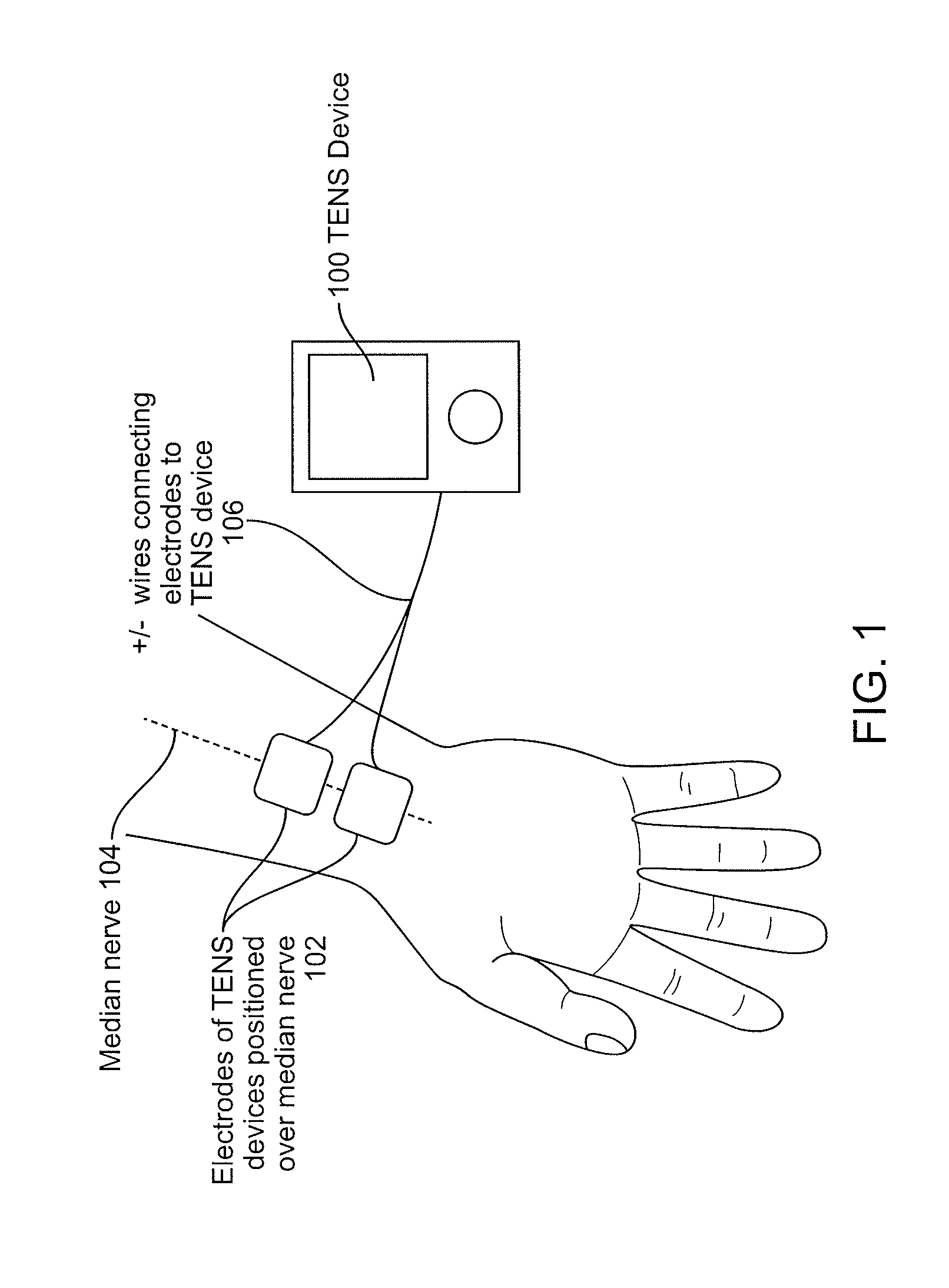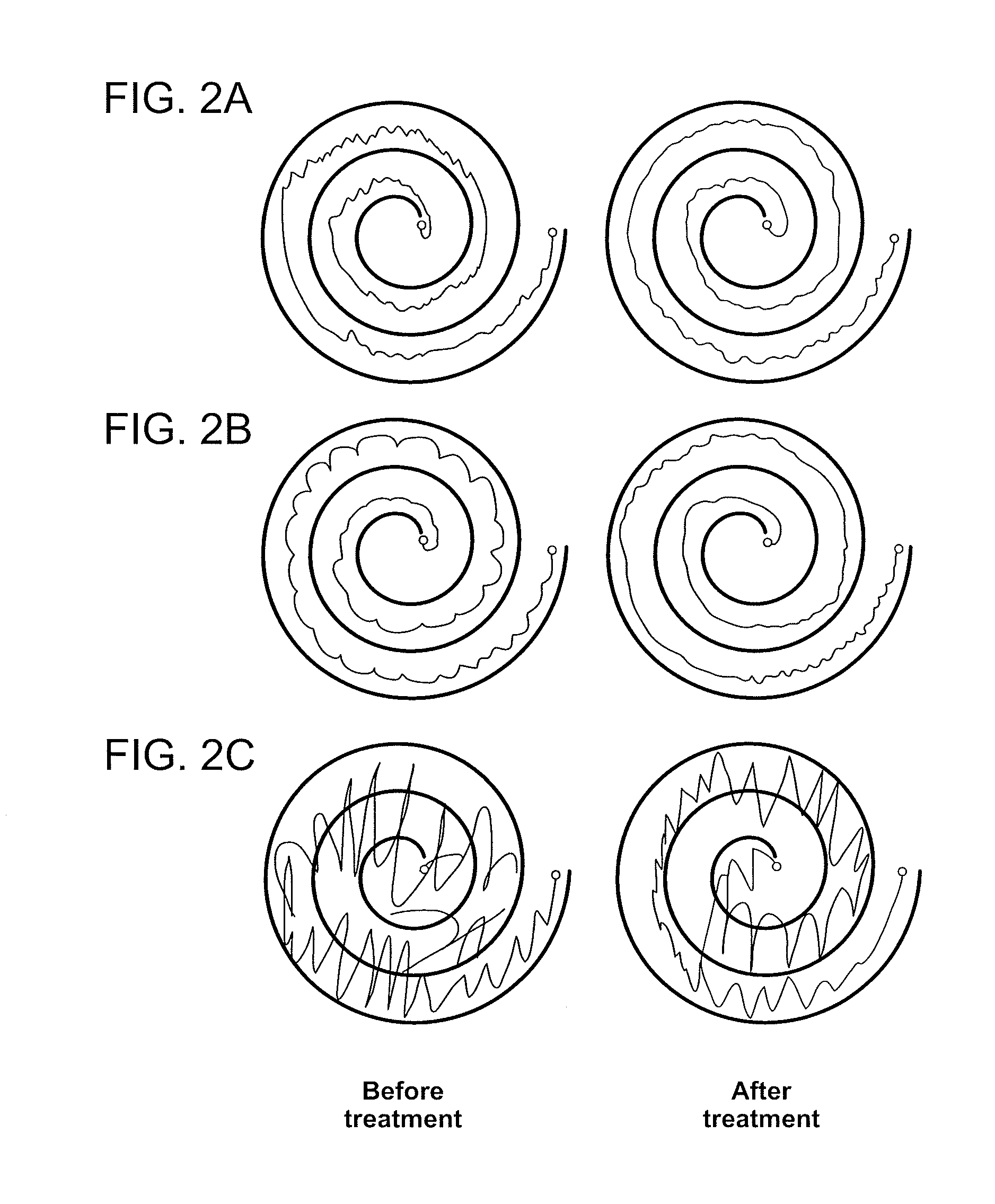Devices and methods for controlling tremor
a technology of tremor and device, applied in the field of system, devices and methods for treating tremor, can solve the problems of tremor in hands and forearms, voice oscillation and unwanted movements of the head and limbs, and difficulty in writing, typing, eating and drinking, etc., and achieves the effect of reducing tremors, simple use, and without the risks of brain surgery
- Summary
- Abstract
- Description
- Claims
- Application Information
AI Technical Summary
Benefits of technology
Problems solved by technology
Method used
Image
Examples
Embodiment Construction
Definition of Terms
[0116]As used herein, the terms “stimulating” and “stimulator” generally refer to delivery of a signal, stimulus, or impulse to neural tissue of the targeted region. The effect of such stimulation on neuronal activity is termed “modulation;” however, for simplicity, the terms “stimulating” and “modulating,” and variants thereof, are sometimes used interchangeably herein. The effect of delivery of the signal to the neural tissue may be excitatory or inhibitory and may potentiate acute and / or long-term changes in neuronal activity. For example, the effect of “stimulating” or “modulating” a neural tissue may comprise one or more of the following effects: (a) depolarizing the neurons such that the neurons fire action potentials, (b) hyperpolarizing the neurons to inhibit action potentials, (c) depleting neurons ion stores to inhibit firing action potentials (d) altering with proprioceptive input, (e) influencing muscle contractions, (f) affecting changes in neurotrans...
PUM
 Login to View More
Login to View More Abstract
Description
Claims
Application Information
 Login to View More
Login to View More - R&D
- Intellectual Property
- Life Sciences
- Materials
- Tech Scout
- Unparalleled Data Quality
- Higher Quality Content
- 60% Fewer Hallucinations
Browse by: Latest US Patents, China's latest patents, Technical Efficacy Thesaurus, Application Domain, Technology Topic, Popular Technical Reports.
© 2025 PatSnap. All rights reserved.Legal|Privacy policy|Modern Slavery Act Transparency Statement|Sitemap|About US| Contact US: help@patsnap.com



